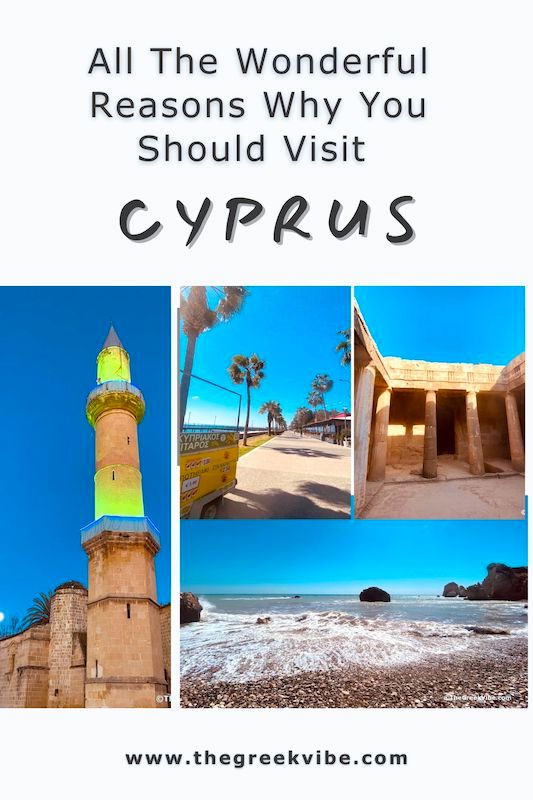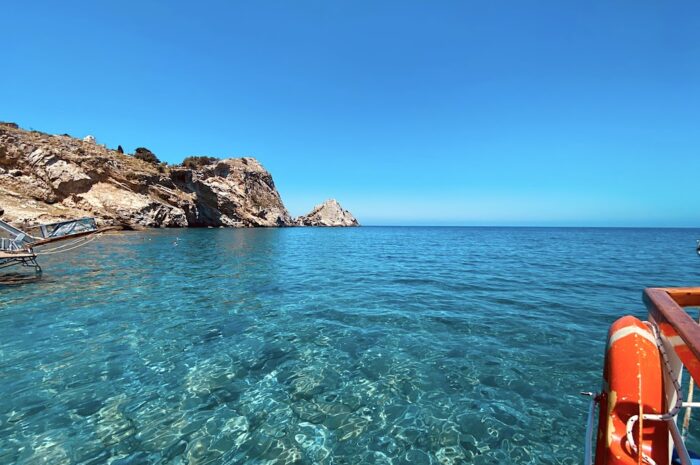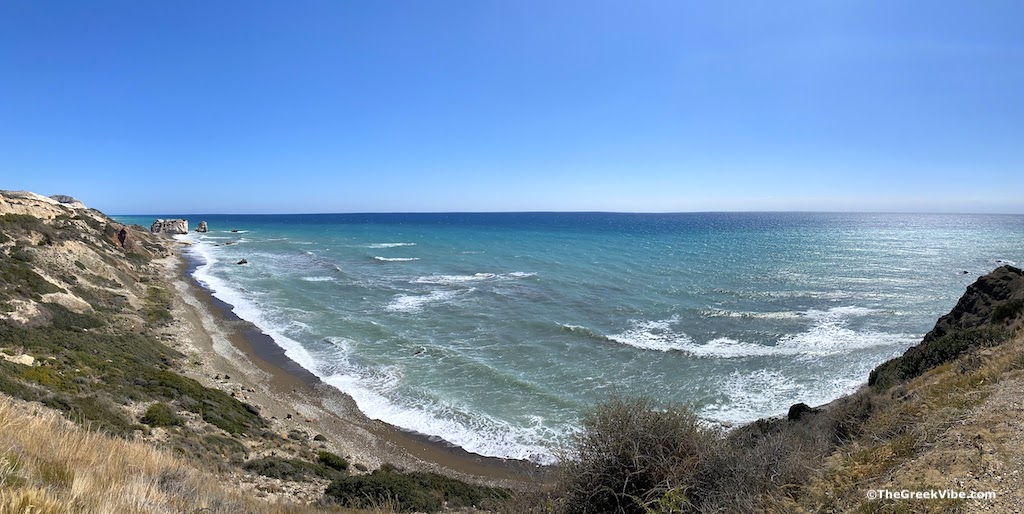
When you ask someone what they know about Cyprus, it’s either the Brits who love Cypriot food and beaches or the more politically aware who know about its tragic modern history. But beyond the absolutely unrivalled food and the unacceptable and unpunished Turkish invasion of the island which has kept it divided since 1974, Cyprus is one of the very few destinations in the Mediterranean that combines a bit of the Middle East and Africa, traces of Greece, and hints of Europe, leaving you wondering which aspect to love most.

Where is Cyprus
Before I answer this let me tell you that Cyprus, or the Republic of Cyprus, is an island and a country strategically located in the eastern Mediterranean Sea, east of Greece, north of Egypt, south of Turkey, and west of Lebanon and Syria.
So you now see why everything from its cuisine to its population carry a bit of each.

Visiting Cyprus
So what’s the Greek connection with Cyprus you ask? If you head past Limassol towards Paphos you will see a breath-taking beach, wild as ever: this is known as the Petra tou Romiou (The Rock of the Greek), and according to Greek mythology, the goddess of love Aphrodite (Venus in Latin) emerged out of the foamy waters in all her breathtaking beauty.
I think that’s reason enough! So let’s get started!
► Excited already, book the best Cyprus hotel for your trip and keep reading.

Paphos
For me, the best way to discover Cyprus and get the most of your experience is to travel first to Paphos and stay there for a few days. Do visit the amazing ancient sites: the Nea Paphos Archeological Park and the Tombs of the Kings, which are both UNESCO World Heritage sites, the Agia Solomoni catacombs, the Saranta Kolones fortress and castle on the harbor.
Also head to the Akamas Peninsula where the crystal-clear waters of the Blue Lagoon and the Peyia sea caves will lure you in.
You’ll notice that Paphos is a bit like a British town with traces of the Mediterranean for color. Massive boardwalks on the coast, towering palm trees, sandy beaches, sunbeds and umbrellas, nicely planned neighborhoods. The reason is that many UK expats live here and many pensioners have made the Cypriot city of sun their home. It is an absolute must to catch the sunset in Paphos – every day if possible. Absolutely stunning!

Limassol
From Paphos make your way to Limassol (Lemesos in Greek), a seaside town that is evolving into a mini Dubai. You’ll be impressed by its massive boardwalk which serves as a meeting place, is full of bars and cafes, perfect for jogging and walking, for baby strollers, or for sipping your morning coffee, and offers spectacular views to the modern skyscrapers that are changing the shoreline. At the same time, Lemesos’ old town is the happening place for the younger artsier crowds with eateries and hangouts hidden behind minarets and bell towers.
Stay for two or three days. I recommend Nyx Hotel, modern, polite staff, clean, unbeatable breakfast, and super sea views. Limassol is the ideal base if you’re the exploring type because from here you can travel to my absolute favorite part of Cyprus: Troodos Mountain.
Subscribe to The Greek Vibe monthly newsletter!
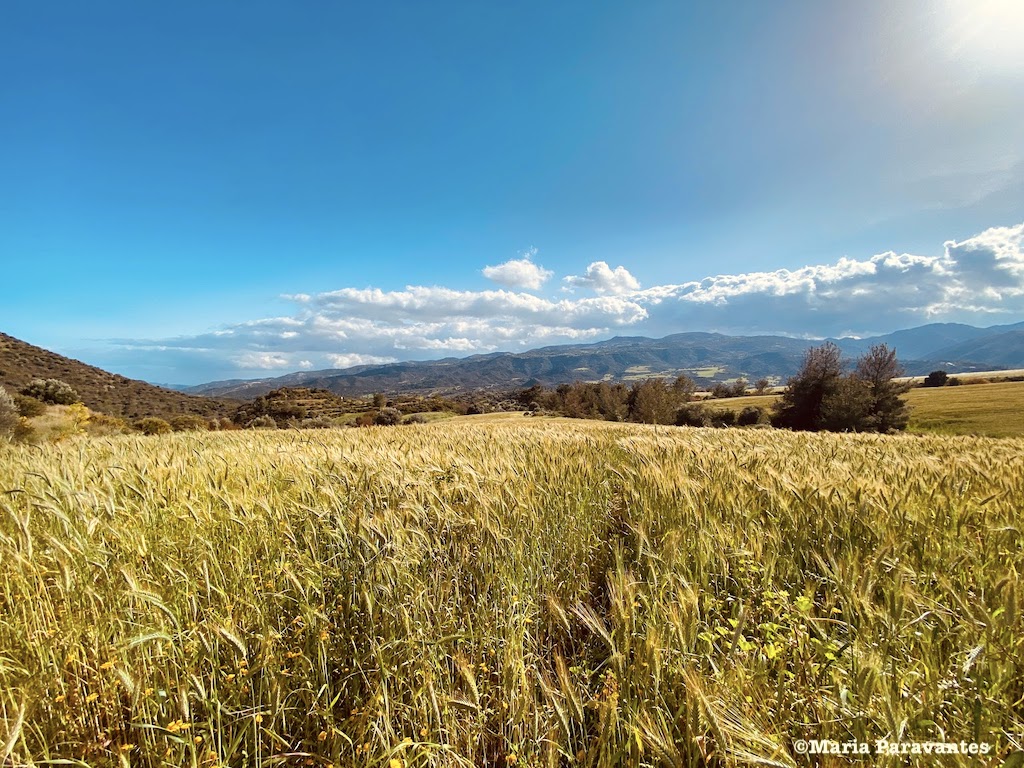
Troodos Mountain, Cyprus
For the Cypriots, Troodos Mountain is the country’s lung and an essential escape from the island-nation’s coastal heat. At 1,952 meters (6,404 feet) and covering approximately 15% of the total area of Cyprus, Troodos and its highest peak Hionistra, are where you’ll find outdoor enthusiasts, history buffs, and nature lovers.
You’ll be walking or hiking or even cycling in lush forests of pine, cedar, and juniper. Yes, Troodos is a haven for hikers and explorers seeking tranquillity and adventure. Trails lead you through a verdant landscape to hidden waterfalls, perfectly preserved villages, and Byzantine monasteries.

Troodos is part of UNESCO’s Global Geopark network and home to some 110 communities with a total population of 25,000 residents. If you’re looking for traditions and local customs, this is where you’ll find them. Here you will also find the village of Lefkara, which made Cyprus famous worldwide thanks to its fine lace and handmade embroideries. You’ll also find a handful of Byzantine-era churches and chapels which are also UNESCO heritage sites.
In winter, Troodos attracts skiers and snowboarders and all this in the Eastern Mediterranean! The unique thing about Troodos is that in under an hour you can go from skiing in the crisp snow to sunbathing on one of the island’s golden-sand beaches.
On your way up Mt Troodos make sure to stop at as many of the 28 villages as possible. There are the “krasohoria” (wine-producing villages) such as Omodos, on Troodos’ northern slopes as well as Platres, Vouni, Vasa, and Agios Amvosios, where they make the famous dessert wine Koumantaria, and on the other side Kalopanagiotis, Pedoula, Prodromos, Foini, and Tris Elies, to name just a few.
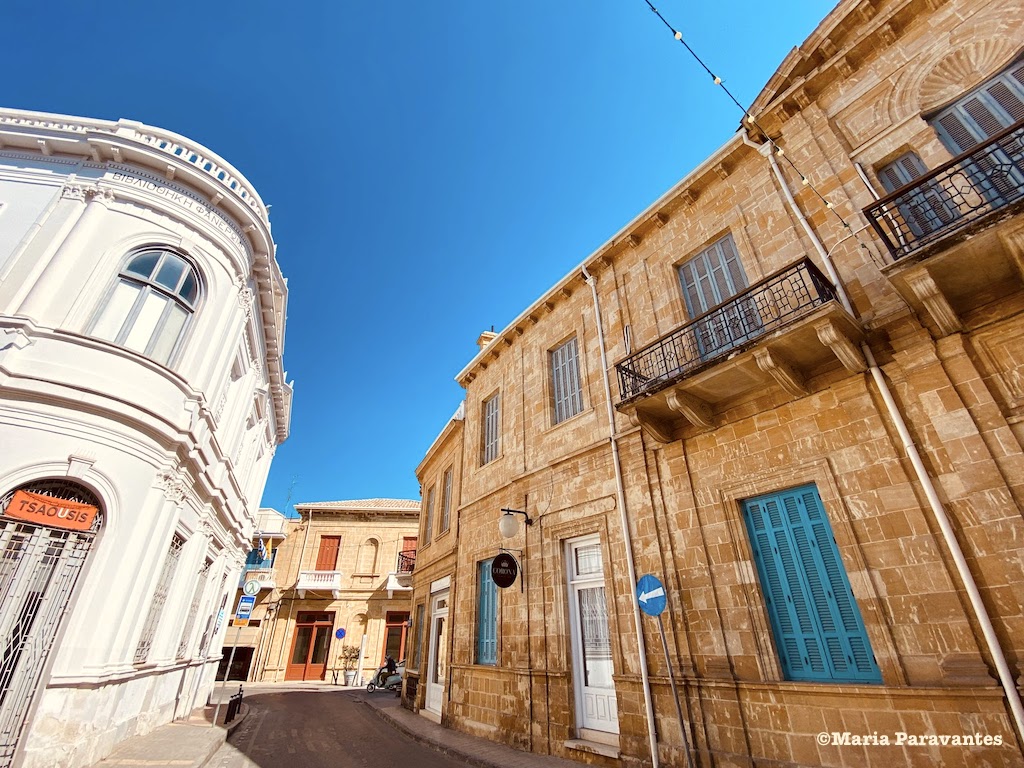
Nicosia (Lefkosia)
Downward from Troodos head to Nicosia, the country’s capital and rightfully so. Stay there for at least two nights and stay in the old town. I recommend Centrum Hotel, vintage and ultra clean, and the Classic for easy access to the old town.

There are three things you must do when visiting Nicosia:
1) walk till you drop. Explore every corner of the old town which is slowly but steadily evolving into a trendy, artsy center that sticks its tongue out to a reality that is heartbreaking to say the least. Dozens of new clubs, bars, galleries, renovated homes and mansions, a hammam, mosques and Orthodox churches make for the perfect setting as if right out of a movie. Don’t forget to stop by one of the oldest and most famous bar/pubs in Nicosia: Plato’s. Admire the interior and the hundreds of bottles of liquor and beers.
2) eat and eat cheap at Sham Food for the best-ever Syrian food – do try Mahalabia (or Muhallebi), a Middle Eastern milk pudding that is totally addictive, the Armenian “lachmatzoun” (mince meat pies), and my favorite Cypriot “koupes”, a meze or street food – depending on your age – that is utterly perfect at Avo’s. You’ll know you’re at the right places from the long lines of people waiting. You can actually eat well (and healthy) in Nicosia for under 20 euros for two.


3) Take Ledras St all the way to the border point in the city center. Like I said before, Nicosia is split in half. If you walk along that border – known as the “Green Line”, a United Nations buffer zone between the two parts of the city where no activity is allowed – you’ll probably feel very saddened. You’ll see abandoned homes, buildings, schools, churches and shops belonging to Nicosia Cypriots behind the barbed wire, dozens of cameras, and signs that ban photos and entrance. Imagine if one day you just couldn’t go to your home, shop, or school.
Don’t be surprised when upon entering Nicosia you see an enormous and very ugly Turkish disco flag on the hill along with one painted into the hill. The shameful action speaks for itself.
I think that Nicosia is a city of diversity and despite the Green Line is a place of acceptance and tolerance as you will find Christians, Muslims and people of all faiths living and working there in harmony. It is also a busy hub for commerce and finance and home to many international businesses, banks, and universities.
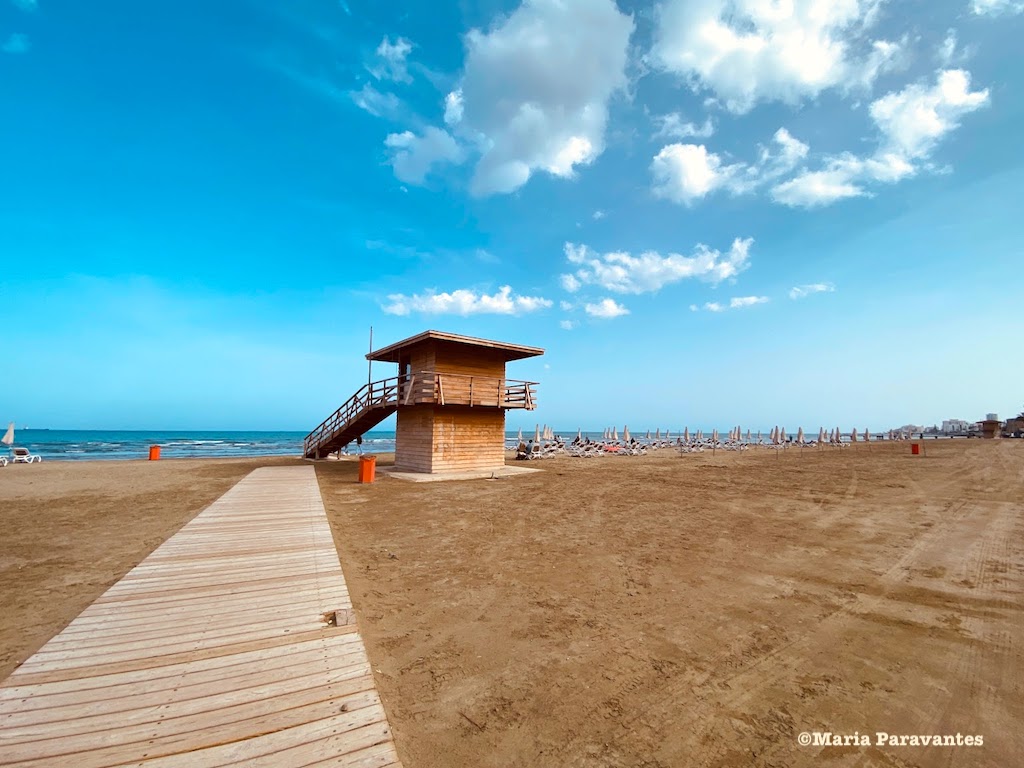
Larnaka
To the south, you’ll find Larnaca, a coastal town which still preserves a ’70s vintage feel combined with an alluring mix of Eastern and Western elements and a new emerging urban style.
In addition to its popular (and massive) Baywatch-style Finikoudes Beach with its extra fine golden sand and crystal-clear waters, Larnaca’s palm-lined promenade is perfect for leisurely strolls with some ice cream in hand in the late evenings.
I do suggest you wander off the main tourist areas through the narrow alleys of Larnaca’s Old Town to get that Middle Eastern feel.

Larnaca is also known for its vibrant nightlife and excellent food, of course. Historic sites you should visit include the Bronze Age ruins of ancient Kition, the Larnaca Castle which dates back to the 12th century, the Kamares Aqueduct, and the Hala Sultan Tekke Mosque.
If you’re into scuba diving or snorkeling, make sure to book a Zenobia Shipwreck experience.
From there you can continue your trip to Protaras and Ayia Napa, an Ibiza-style getaway home to some of Europe’s best beaches and beach bars.

Things you Didn’t Know About Cyprus
• Geographically, Cyprus is part of Western Asia.
• Culturally it is closer to Greece.
• Its cuisine is a more toned-down version of Middle Eastern cuisine with unique dishes to be found only there like my favorite “kolokasi” a local vegetable used in stews.
• Cyprus is the third-largest and third-most populous island in the Mediterranean.
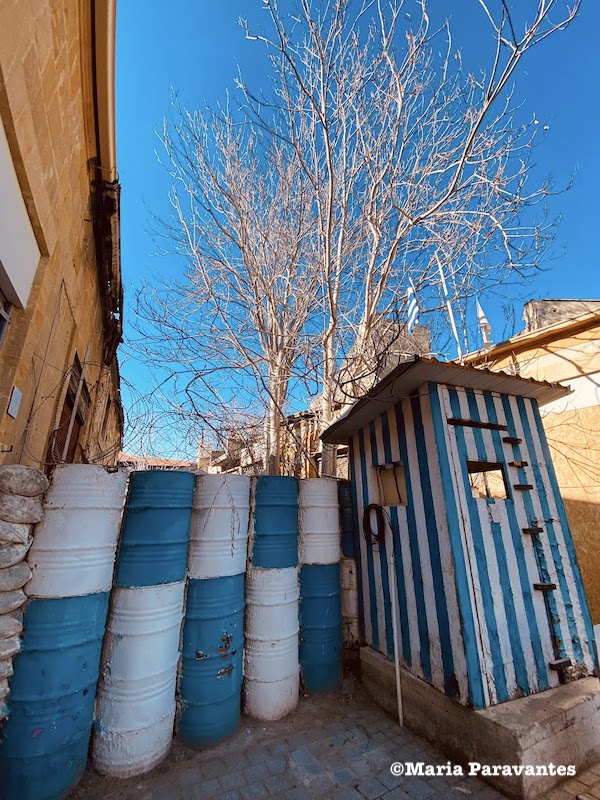
• Cyprus has been divided since 1974 when Turkish forces invaded the island occupying the villages along its northeastern shores and part of its capital Nicosia. More than 200,000 Cypriot inhabitants of these territories were forcefully and violently removed and never again allowed to visit their homes, schools, workplaces, and churches. More than 2,000 were never found. To ensure the Cypriots never returned, Turkey sent over new settlers who now live in the Cypriots’ former homes. Until this day, the northern part of the island has not been returned to its rightful owners and if you visit Nicosia you will see for yourself rusty barbed wire and threatening cameras banning entrance to the occupied territories. Despite being a European Union country illegally occupied by Turkish troops, the EU has failed to resolve what is known today as the “Cyprus issue”. The result being that Cyprus is the only country in Europe to be divided by force. The northern occupied side of the island is governed by a self-proclaimed regime not recognized officially by any country in the world other than Turkey.

In the past, following the Ottoman conquest of 1570 which came after the Venetian rule and before the UK and Turkey occupations, the island was also home to a small population of ethnic Turks, who were also affected by the 1974 attacks. Some were also among the missing.
• Cyprus was in 1914 annexed by the UK, gaining independence after insurgence in 1960.
• There are three official languages in Cyprus: Greek, English and Turkish.
• Although never being a part of Greece, Cyprus and Greece share the same national anthem.
• In the 2nd millennium BC, Cyprus was settled by Mycenaean Greeks.

Maria’s Tips for Your Visit to Cyprus
• the best time to visit Cyprus is in March, April, September and October. The reason is the weather.
• the weather in Cyprus is dry in the summer and wet in the winter. It gets very warm in the summer and is mostly mild during the rest of the year

• the best way to discover Cyprus is to rent a car. Warning! Only if you are comfortable driving on the left and sitting in the driver’s seat on the right. If not, best to travel by bus.
• eating in Cyprus: order a meze and watch one by one small plates with local delicacies come your way: these include grilled halloumi cheese, smashed olives, sheftalia spiced minced meat patty, grilled meats, or try traditional Cypriot souvlaki, skewered meat served with pita bread, tomato, onion and parsley, “flaounes”, “ravioles”, sausage and “lountza” ham and “kolokoti”, as well as local stuffed vegetables (“gemista”) which they make in the pan and not in the over like in Greece.
• order (and buy) some Koumantaria, a fortified wine dating back to 800 BC that is the world’s oldest named wine still in production; Zivania a locally-made pomace brandy, or Cyprus’ unofficial national cocktail brandy sour.
• make sure to bring a Type G plug the same with the UK
• money used in Cyprus is the euro
• don’t forget to pack a hat – this is the one I wear for great shade – sunglasses, and this tried and tested sunscreen – all times of the year. Absolute musts!
• you can use credit cards but if you want to withdraw cash ask your bank about charges
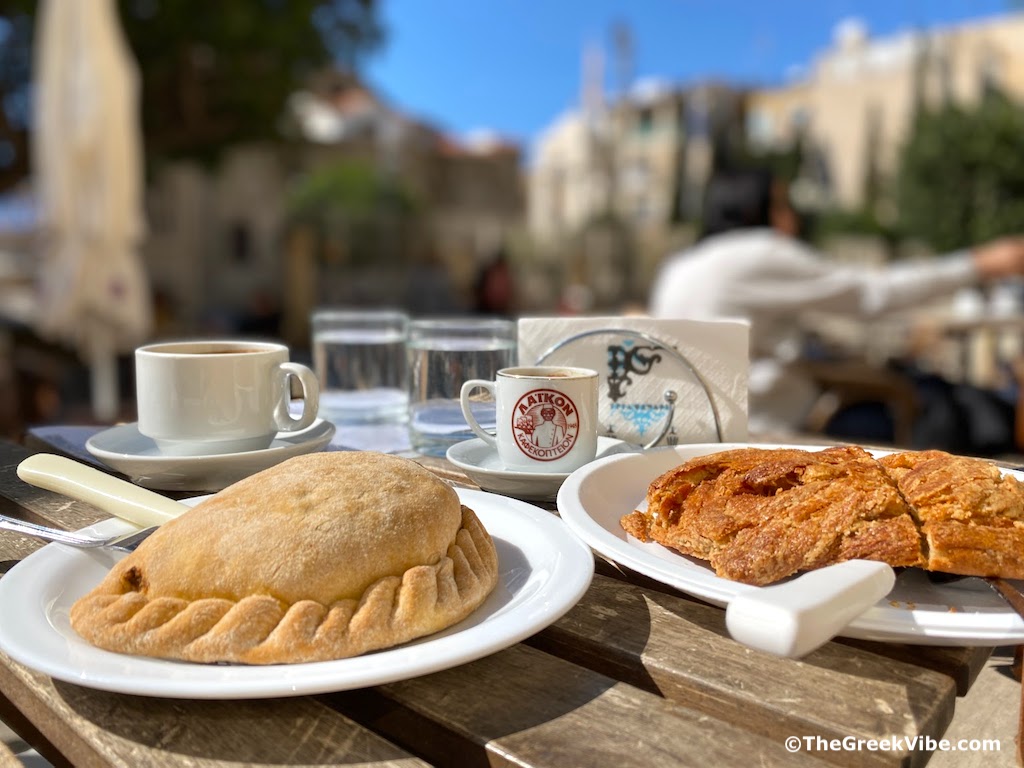
• if you go in summer make sure to attend a panegyri – lively folk festivals with traditional Cypriot and Greek music, lots of dancing and wine
• before you leave: buy “Dachtyla” sweets, tahini pies, loukoumia, Koumantaria, soutzoukos sweet, pasteli, “halepiana” (pistachios), dates, halloumi cheese. The list is endless (so are the calories!)
• Cyprus is perfect for the sun-loving amongst us with fantastic beaches to do just that plus lots of swimming. These are my picks: Makronissos Beach in Ayia Napa, Coral Bay, Blue Lagoon Beach, Protaras (Fig Tree Bay), Lara Beach, and Aphrodite’s Rock (Petra tou Romiou).
These are some of the trusted partners I use when I travel abroad.
- 🏩 Expedia is my favorite when I want to find the best hotels and affordable accommodation.
- 🛫 I always look for cheapest flights on Kayak
- For vacation home rentals is love VRBO
- I use Tripadvisor all the time for restaurant and hotel ratings and for things to do.
- 💵 In these unstable times and especially during holidays and summer, it’s important to know your rights and to get help or compensation for flight delays & cancellations. The people at AirHelp are experts
- 📞 Don’t pay exorbitant prices for your phone. Instead, stay connected using a local SIM card at affordable prices with Airalo
*The Greek Vibe may receive commissions on purchases made through affiliates and partner links. Clicking affiliate or partner links comes at no additional cost to you but goes a long way in supporting our work.
♫ I end today’s post with a favorite and very moving song about Cyprus sung by Cypriot superstar Anna Vissi during a concert in Nicosia in 2011. The 1965 song composed by Mikis Theodorakis to the verse of Leonidas Malenis is about a golden-green leaf adrift in the open sea. The song titled “Chrysoprasino Fyllo” refers to the national tree of Cyprus, the golden oak (Latzia), which is a unique species found only on Mt Troodos.
Be well. Travel!
Enjoyed this Post? Share and Pin it!
